Snowshoeing is one of the simplest winter activities to try. If you can walk, you can snowshoe - it’s that easy! Unlike skiing or snowboarding, there’s no steep learning curve or expensive lessons. All you need is some basic gear, and you’re ready to explore snowy trails or even your backyard.
However, beginners often face challenges like walking in deep snow, dealing with bulky gear, or worrying about costs. That’s where lightweight options like Snowfeet Mini Ski Skates come in. These compact alternatives to snowshoes offer a fun, easy way to enjoy the snow without breaking the bank or lugging around heavy equipment. They work with your regular winter boots, cost less than full snowshoe setups, and are perfect for flat trails or gentle slopes.
Key Takeaways:
- Snowshoeing Basics: It’s just walking on snow - perfect for beginners.
- Beginner Challenges: Deep snow, balance, heavy gear, and cost.
- Gear Options: Standard snowshoes vs. compact, affordable Snowfeet ($250–$275).
- Tips for Success: Start on flat terrain, dress in layers, and stay hydrated.
Snowshoeing doesn’t have to be intimidating or expensive. With the right gear and a little preparation, you’ll be out enjoying the snow in no time!
Snowshoeing 101: Clothing, gear, and mistakes to avoid | How to snowshoe for beginners
Common Problems Beginners Face in Snowshoeing
Snowshoeing looks simple, but it is not as easy as it looks, especially if you are just starting out. There are some big problems that many new people run into. Let's talk about what these problems are, and ways you can deal with them.
How Hard It Can Be and How You Move on Snow
If you are new, you might find it hard to walk in snow. You need more strength because moving through deep snow takes a lot of work. Your legs will likely feel tired. Walking up hills is tough, and going down can be scary and hard to control. You must learn to keep your balance while your feet slide or sink. The cold and wind make it even harder, and the snow changes as you move. This all can feel too much at first.
But there is good news. You do not need to rush. Find a flat path, one that is clear and not too deep at first. This will help you learn and let your body get stronger. Then, when you feel good, try harder trails. Picking the right shoes and clothes will also help. With the right gear, your feet will not get as tired, and you will have a better time outside.
Heavy Gear and Moving in a New Way
Old snowshoes are big and awkward. This makes it hard to carry them from place to place or to pack them in your car or bag. Walking with them can make you walk in a strange way, which sometimes leads to tripping or falling. It is easy to get stuck or not know how to walk right. And when you have to change the straps out in the cold, your hands get stiff and it feels tough.
There are better shoes now, like Snowfeet. These look like short skis and are small and light. Walking with them feels much more normal. You do not have to deal with big shoes or tough straps. They are easy to bring along, easy to put on your boots, and you do not feel weighed down. This means you can start faster and get used to things quicker.
How Much It Can Cost
Another problem is how much it all costs. Buying snowshoes, boots, sticks, and winter clothes adds up fast. Even renting them a few times can take a big bite out of your money. Then, you will have to keep everything in good shape, and that can cost more.
But there is a way to save. With Snowfeet, you do not need to buy special winter boots. These work with shoes you already have, so you do not need so much gear. This helps keep your costs down. If you are new, this lets you try snowshoeing without spending too much from the start. It is easy and cheaper to begin, and you can see how you like it before you buy more things down the road.
Required Gear for Snowshoeing: What You Need to Know
Having the right gear can make or break your snowshoeing adventure. The good news? You don’t need to empty your wallet or haul around a ton of stuff. Let’s break down the essentials and explore some lightweight alternatives.
Standard Snowshoeing Gear Checklist
Here’s a quick rundown of the must-have items for snowshoeing.
First up, snowshoes - the star of the show. Choose snowshoes based on your weight, including the weight of your backpack. If you’re just starting out, flat-terrain snowshoes are a great choice. Pair them with winter boots that are insulated and waterproof to keep your feet warm and dry. Don’t have winter boots? No problem - hiking boots with full-length gaiters can work in a pinch.
Trekking poles with snow baskets are a game-changer. They help you stay balanced, especially when you’re tackling steep inclines or descents. As for clothing, think layers: a moisture-wicking base layer, an insulating mid-layer, and a waterproof outer shell. And seriously, ditch the cotton - it soaks up moisture and leaves you freezing.
Don’t overlook the smaller, but equally important, items: gaiters, a warm hat, waterproof gloves, sunglasses, and sunscreen. These will protect you from the elements, whether it’s biting wind or glaring sunlight. You’ll also need a backpack to carry extra layers, snacks, water, and safety gear.
Looking for something lighter and simpler? Snowfeet* offers a fresh take on beginner-friendly gear.
Lightweight and Portable Options: The Snowfeet* Advantage
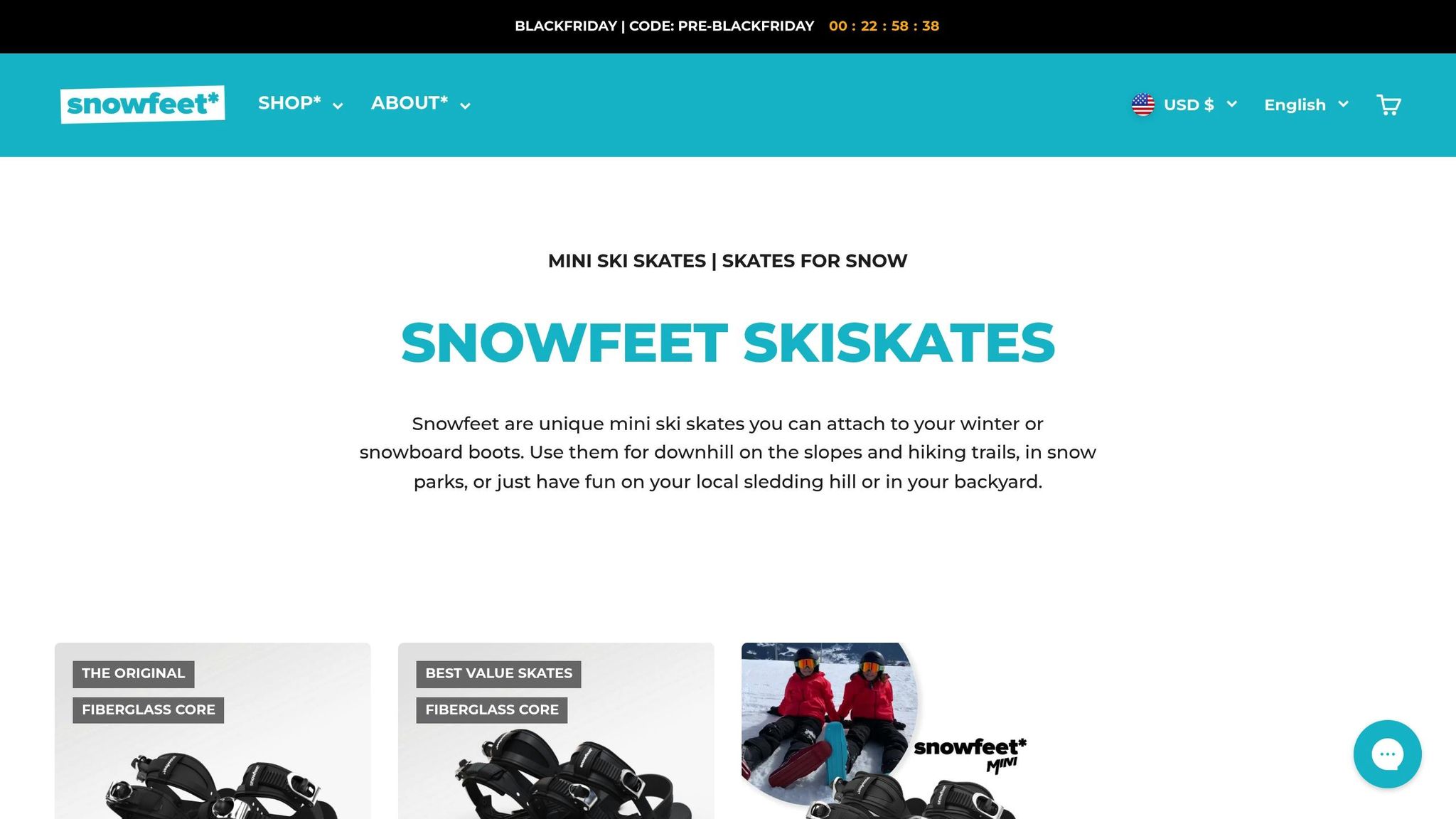
If you’re tired of lugging bulky gear or spending a fortune, Snowfeet* has you covered. Their Mini Ski Skates are a compact, lightweight alternative to traditional snowshoes and can easily fit in your backpack.
Here’s the deal: Snowfeet* Mini Ski Skates (38 cm) work with your regular winter shoes - no need for specialized snowshoeing boots. Priced at $250, they’re a budget-friendly option compared to buying snowshoes, boots, and all the extras. Want more features? The Snowfeet* PRO (50 cm) is available for $275, offering adjustable bindings and a variety of colors.
Their shorter, wider design makes them easier to control and more stable - perfect for beginners. Plus, they’re versatile enough for all kinds of terrain: slopes, parks, trails, or even your backyard. The best part? They feel natural to use, so you’ll pick up the technique faster than with traditional snowshoes.
Comparison Table: Standard Snowshoes vs. Snowfeet* Products
| Feature | Standard Snowshoes | Snowfeet* Products |
|---|---|---|
| Weight | Heavier and bulkier | Lightweight and compact |
| Portability | Require large storage space | Fits in a regular backpack |
| Boot Requirements | Need specialized winter boots | Work with regular winter shoes |
| Total Cost | Higher (shoes, boots, poles) | More affordable overall |
| Learning Curve | Awkward gait, risk of tripping | Natural, easier to learn |
| Terrain Flexibility | Best for snow trails | Versatile - slopes, parks, backyards |
| Storage | Bulky, needs space | Compact and easy to store |
| Maintenance | Regular adjustments needed | Minimal maintenance |
This table sums it up: Snowfeet* products are a great option for beginners who want to enjoy snowshoeing without breaking the bank. Plus, their portability makes them perfect for travel - throw them in your car or even in your carry-on for your next snowy adventure!
How Snowfeet* Products Make Snowshoeing Easier for Beginners
If you're new to snowshoeing, the right gear can make all the difference. Snowfeet* products are designed to take the intimidation out of starting by replacing bulky, traditional snowshoes with a sleek, easy-to-use alternative. They tackle common beginner challenges like unwieldy equipment and tricky learning curves, making your first steps on the snow a breeze.
Lightweight and Easy to Carry
Traditional snowshoes can be cumbersome, making it tough to head out on a whim. Snowfeet* Mini Ski Skates solve this problem with their compact, lightweight design. At just 38 cm long, they’re easy to pack and store, fitting neatly into your gear bag or even a small backpack. Plus, they’re compatible with your regular winter boots, so there’s no need to splurge on specialized footwear.
Quick to Learn and Comfortable to Use
Let’s face it - traditional snowshoes can feel awkward, especially for beginners. Snowfeet* products are designed to feel more natural right from the start. Their shorter and wider shape promotes better balance and an easy, intuitive stride. For instance, the Snowfeet* PRO comes with adjustable bindings that let you customize the fit for immediate comfort. This thoughtful design helps you feel confident faster, so you can spend less time stumbling and more time exploring.
Ready for Any Terrain
While standard snowshoes are often best for groomed trails, Snowfeet* gear is built to handle a variety of conditions. Whether you’re gliding over gentle slopes or tackling trickier terrain, Snowfeet* products adapt to your needs. The Snowfeet* PRO, with its 50 cm length, offers extra stability for uneven surfaces while remaining beginner-friendly. With this kind of versatility, you won’t need to swap out equipment as you grow more adventurous.
sbb-itb-17ade95
Snowfeet* vs. Standard Ski and Snowboard Equipment
Let’s see how Snowfeet* stacks up against traditional ski and snowboard gear. For beginners, the choice between long skis, snowboards, and Snowfeet* can feel overwhelming. Snowfeet* simplifies things with its compact design, making it easier for newcomers to dive into winter sports.
Key Differences in Design and Function
Unlike traditional skis and snowboards, which are longer and built for groomed slopes, Snowfeet* products are short and sleek. This design encourages a natural walking motion while gliding on snow. Plus, they’re lightweight and compact enough to fit in a regular backpack - no need for specialized storage.
Comparison Table: Snowfeet* vs. Standard Ski and Snowboard Gear
| Feature | Snowfeet* Products | Traditional Skis | Snowboards |
|---|---|---|---|
| Size | Compact, easy to maneuver | Long, built for high-speed control on slopes | Long, requiring a unique balance approach |
| Weight & Portability | Lightweight, fits in a backpack | Heavier, needs special storage | Bulky, often requiring cases or roof racks |
| Boot Requirement | Works with regular winter boots | Needs specialized ski boots | Requires snowboard-specific boots |
| Learning Curve | Quick to learn, natural gliding feel | Involves more lessons and technical learning | Requires time to master balance and movements |
| Terrain Flexibility | Great for parks, backyards, and gentle slopes | Optimized for groomed slopes | Best on maintained slopes |
| Cost for Beginners | Affordable entry point, no extra gear needed | Higher upfront cost for gear and lessons | Additional expenses for specialized equipment |
Why Snowfeet* is Perfect for Beginners
Snowfeet* is all about accessibility and simplicity. Instead of splurging on an entire setup with specialized boots, bindings, and lessons, you can grab a pair of Snowfeet* Mini Ski Skates for as low as $250. That’s a pretty low-risk way to explore snowy terrain - whether it’s your backyard, a local park, or a gentle hill.
Traditional ski resorts and equipment can feel daunting for beginners, with their steep slopes and complicated setups. Snowfeet* lets you ease into winter sports at your own pace. Its lightweight, portable design means you don’t need roof racks or bulky ski bags - just toss them in your backpack and go.
Snowfeet* bridges the gap between casual snow fun and more serious winter sports. It gives you the joy of gliding on snow without the hassle or high costs of traditional gear. If you’re looking for an easy and affordable way to start your winter adventure, Snowfeet* might just be the perfect fit.
Practical Tips for Your First Snowshoeing Trip
Getting ready for your first snowshoeing adventure? A little preparation and the right gear - like Snowfeet* products - can make all the difference.
Choosing the Right Terrain
Start simple. Flat or gently rolling terrain is perfect for beginners. Think of areas like your backyard, a nearby park, or marked trails. Many cross-country ski resorts and sno-parks offer groomed trails that are beginner-friendly. As you gain confidence, you can gradually move on to trails with small hills. Recreational snowshoes, such as Snowfeet* products, are designed to make walking on these types of terrain a breeze.
To find the best trails, check out platforms like AllTrails or the Washington Trails Association. These tools help you locate beginner-friendly routes, starting with flatter and less demanding trails. Stick to well-marked, established paths - this way, help is never too far away if you need it.
Once you've picked the right trail, it’s time to gear up for comfort and mobility.
Picking the Best Gear for Your Needs
For casual fun in the snow, the Snowfeet* Mini Ski Skates (priced at $250) are a great choice. If you're exploring varied terrain, the Snowfeet* PRO ($275) with adjustable bindings offers more versatility.
One of the best things about Snowfeet* products? Their compact size. Unlike traditional snowshoes that might need roof racks or extra storage, these fit easily into a standard backpack. This makes them perfect for family trips, weekend outings, or even those last-minute snow day adventures. Their lightweight design means you don’t have to lug around bulky equipment, keeping things simple and stress-free.
What really sets Snowfeet* apart is the experience they offer. Unlike traditional snowshoes, which are all about walking, Snowfeet* products let you glide across the snow. It’s a fun way to enjoy winter sports without the steep learning curve of skiing.
Layering and Footwear Tips
Good clothing choices can make or break your snowshoeing experience. Dress in layers: start with a moisture-wicking base layer, add an insulating middle layer, and finish with a waterproof outer shell. Don’t forget gloves, warm socks, and a hat that covers your ears. Packing an extra pair of socks is always a smart move - dry feet are happy feet.
For footwear, go with waterproof boots that provide solid ankle support. Insulated boots rated for temperatures between 20°F and 30°F are usually enough for most beginner outings.
Bring along a small backpack stocked with water, snacks, and a basic first aid kit. Since Snowfeet* products are so lightweight, you’ll have plenty of room for these essentials, ensuring you stay comfortable and safe on the trails.
Lastly, don’t forget navigation tools like a map, compass, or GPS. Snow can sometimes hide trail markers, so it helps to know the basics of navigation and familiarize yourself with common trail symbols before heading out.
Conclusion: Why Snowfeet* is the Best Choice for Beginners
Key Points for Beginners
Snowshoeing doesn’t have to be complicated or expensive. As we’ve explored, Snowfeet* products tackle the common struggles that often discourage beginners from diving into winter sports. Unlike traditional skis or snowboards, which can feel bulky and intimidating, Snowfeet* provides a lightweight, portable, and budget-friendly alternative that works seamlessly with your regular winter boots.
One of the biggest perks? Snowfeet* takes the stress out of learning. Its lightweight design means you can move comfortably without lugging around heavy gear. Plus, if you do take a tumble, it’s much easier (and safer) to get back up. As Nathan F., a happy customer, put it:
"Absolute game-changer! They're light, fast, and incredibly fun to ride." - Nathan F.
The compact size also makes them perfect for spontaneous adventures. Whether you’re heading to a groomed trail or just playing around in a snowy park, Snowfeet* fits right into your lifestyle - no need to wrestle with oversized equipment or make big adjustments to your routine.
With these benefits in mind, you’re all set for your next adventure.
Start Your Snowshoeing Adventure
With Snowfeet*, starting your winter journey is as easy as it gets. This gear gives you the freedom to enjoy the snow without the hassle. And it’s not just about buying equipment - it’s about discovering a whole new way to enjoy winter. Unlike traditional skis, Snowfeet* opens up a world of possibilities, whether that’s in your backyard, a local park, or a nearby trail.
So, why wait? Start on gentle slopes, layer up to stay warm, and let Snowfeet* show you how less can truly be more. Lightweight, portable, and fun, they’re the perfect way to embrace winter - no matter your age or experience level.
The snow is calling - step into it with Snowfeet* and make this winter unforgettable.
FAQs
How are Snowfeet products different from traditional snowshoes for beginners?
Snowfeet gear stands out because it's compact, lightweight, and super user-friendly compared to traditional snowshoes. You can strap them right onto your regular winter boots - no need to spend extra on special footwear. Plus, their small size makes them a breeze to carry around and store, unlike the clunky, oversized snowshoes most of us are used to.
For beginners, Snowfeet is a game-changer. They're easier to pick up, more budget-friendly, and offer a fun way to dive into winter fun without the steep learning curve of skiing or snowboarding. If you're looking to shake things up this winter, these might just be your new go-to!
What should beginners know to have a safe and fun first snowshoeing experience?
Snowshoeing is an awesome way to enjoy winter, especially if you’re just starting out. With a bit of preparation, it’s easy to have a safe and fun first experience. The first step? Picking the right snowshoes. They should suit your weight, the terrain, and the type of snow you’ll be trekking through. If you’re looking for something a bit different, lightweight options like Snowfeet Skiskates or Assleds can add a fun twist to your adventure.
When it comes to clothing, layering is your best friend. Go for warm, moisture-wicking layers and pair them with insulated, waterproof boots to keep your feet dry and cozy. Before you head out, check the weather forecast and make sure someone knows your plans - where you’re going and when you expect to be back. If you’re new to this, starting in a flat, open area or joining a guided tour can help you get the hang of things. With the right gear and a little prep, you’ll be all set to explore the snowy trails with confidence!
What types of terrain or snow conditions are best suited for Snowfeet products compared to traditional snowshoes?
Snowfeet products bring a fresh twist to navigating snowy terrains, offering a blend of practicality and fun that traditional snowshoes just can’t match. Thanks to their compact, lightweight design and built-in mountaineering-grade crampons, they provide excellent grip and mobility. Whether you're on packed trails or gliding through fresh powder, these are built to handle it all.
Unlike bulky snowshoes, Snowfeet let you move quicker and with more agility - perfect for mixed terrain or tighter spots where traditional gear might feel clunky. From backcountry adventures to casual winter strolls, they make exploring the snow easier and more exciting for beginners and seasoned explorers alike.







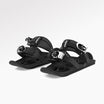
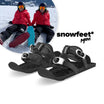
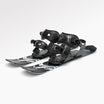
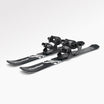

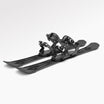

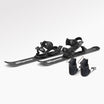






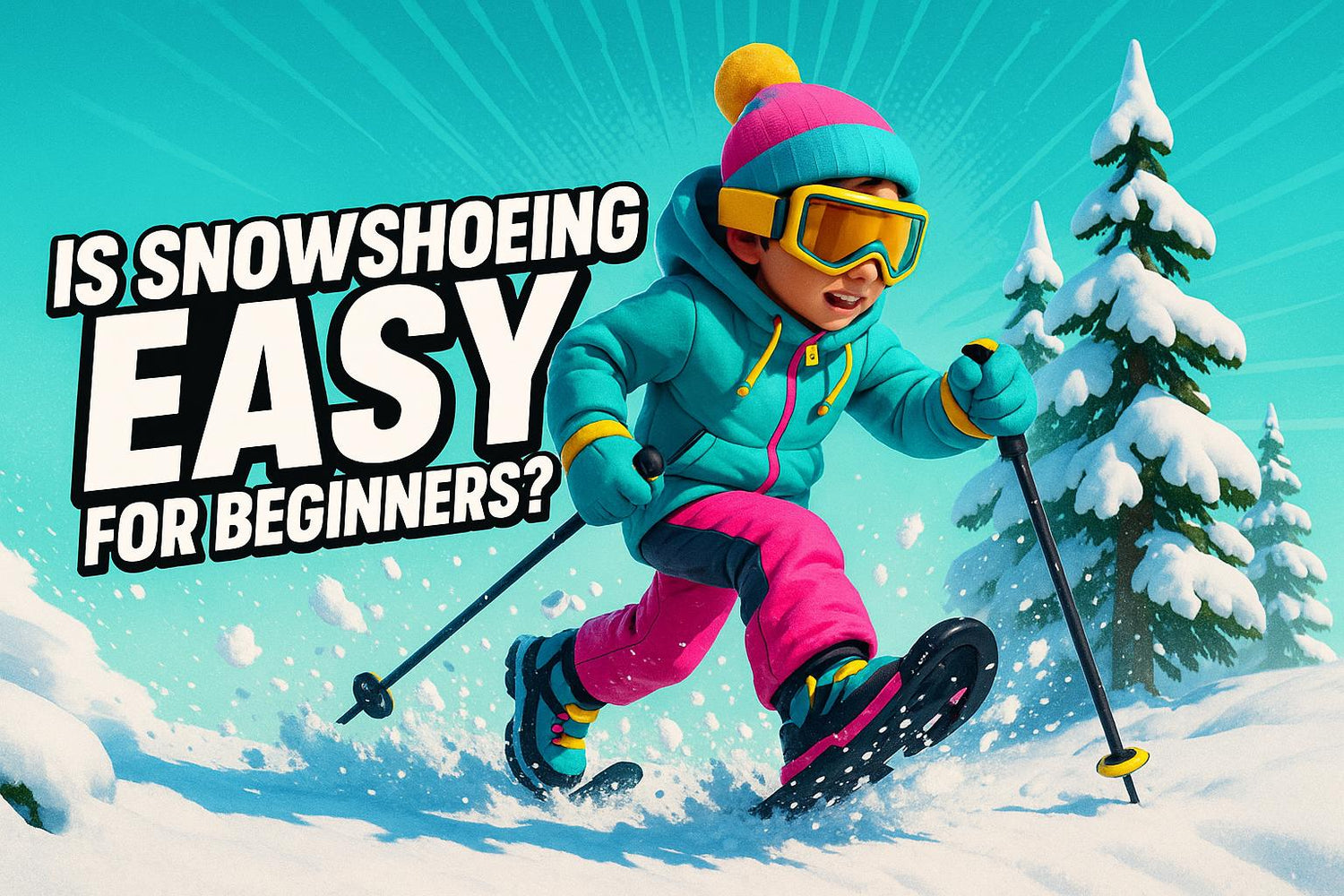






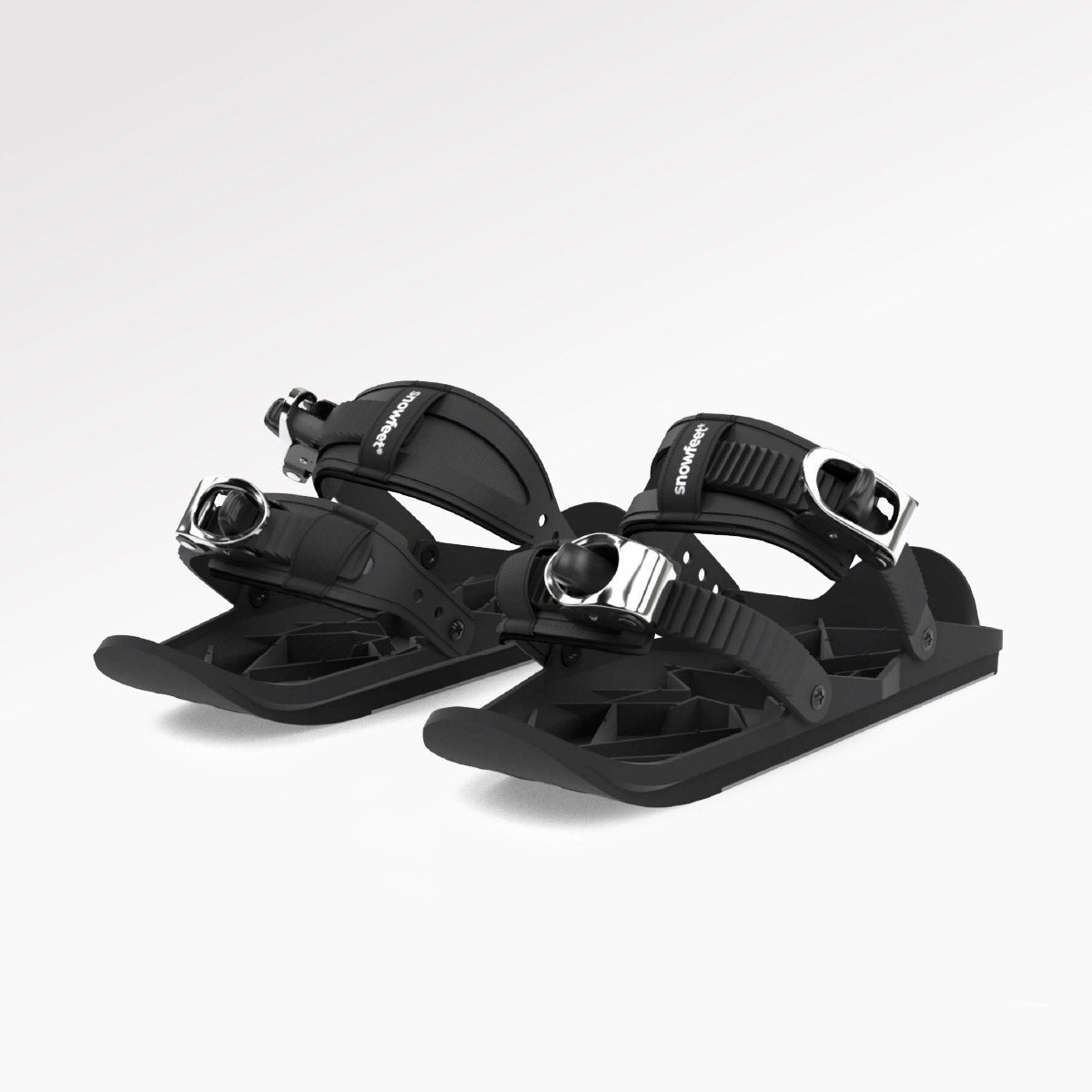
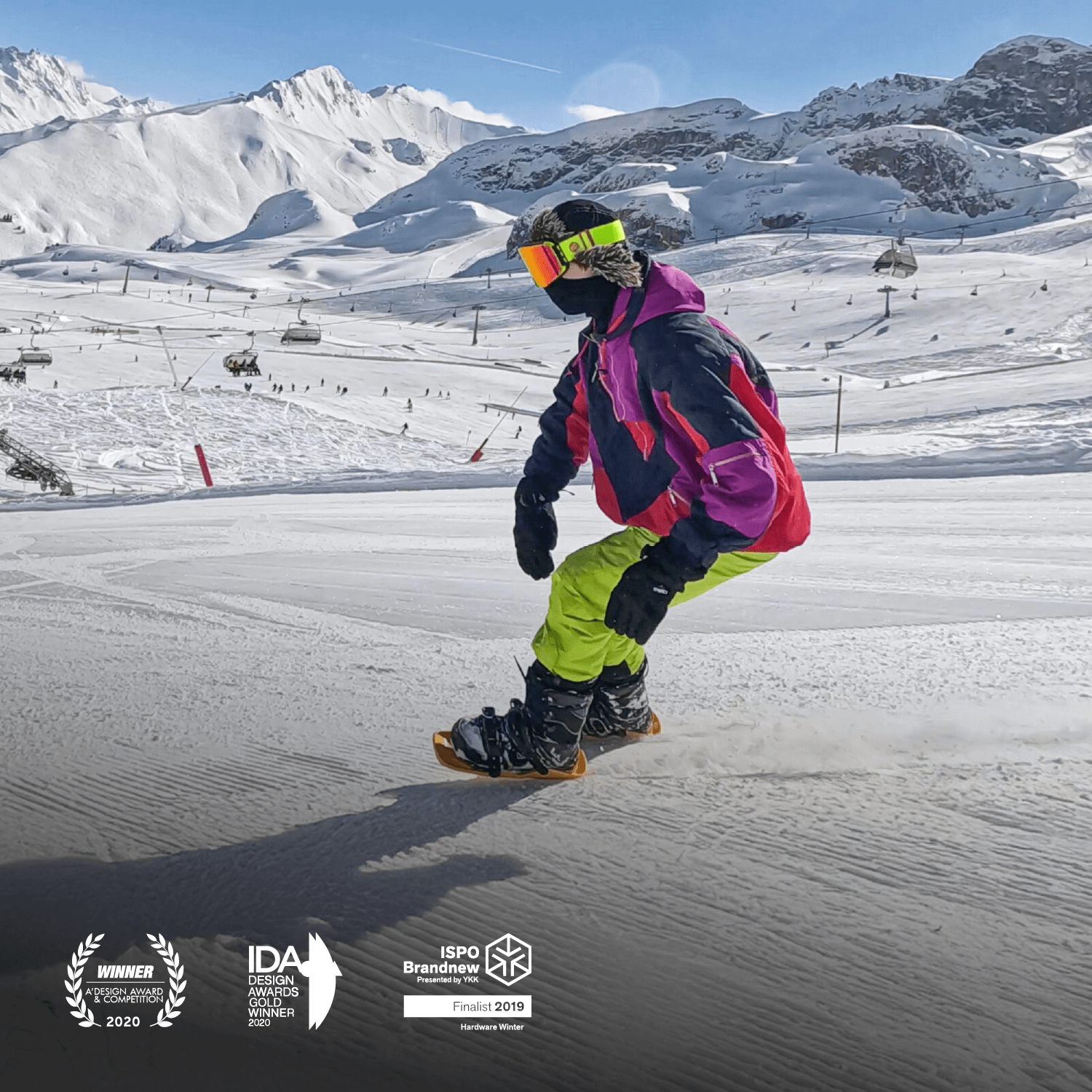
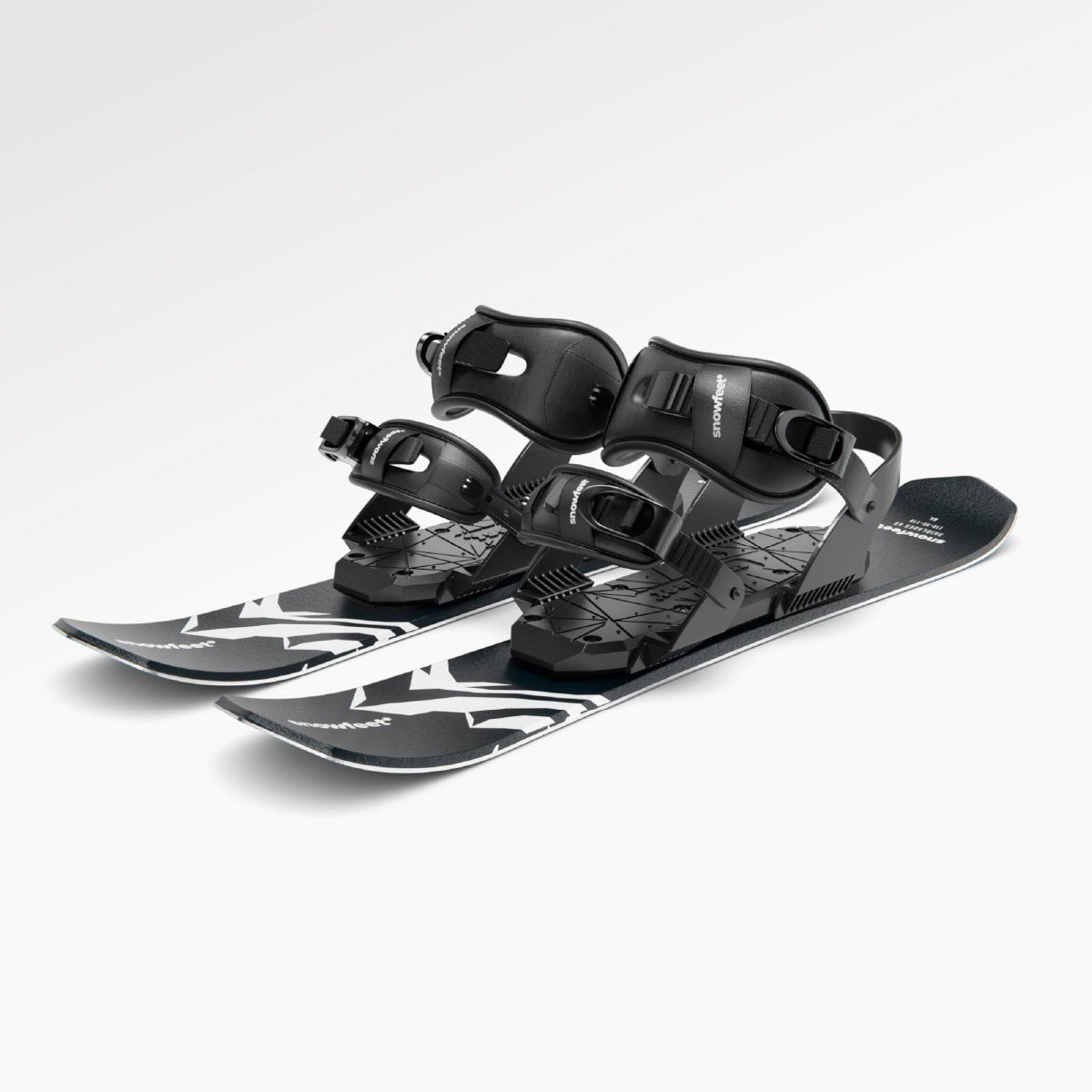

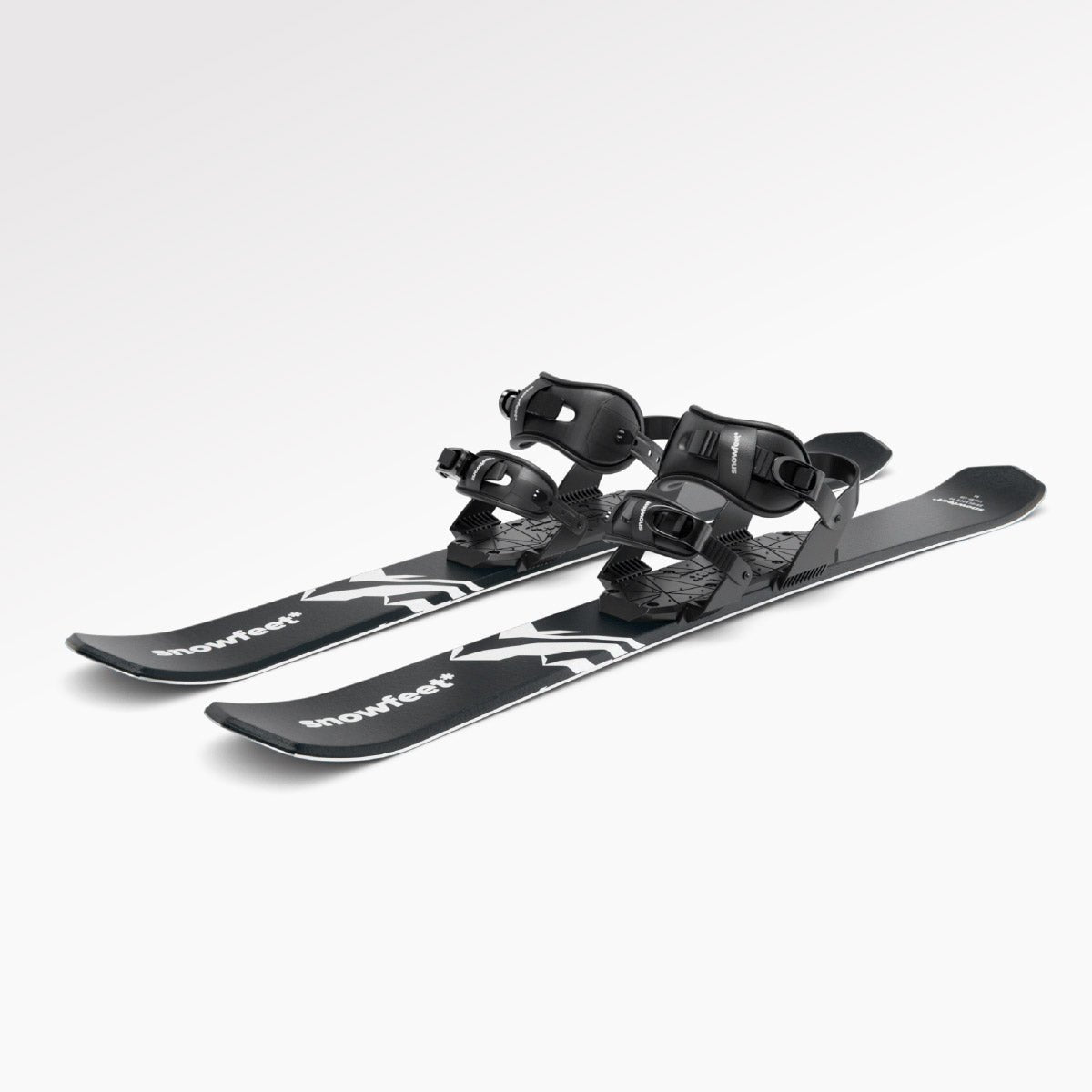

Laat een reactie achter
Deze site wordt beschermd door hCaptcha en het privacybeleid en de servicevoorwaarden van hCaptcha zijn van toepassing.